Today Apple announced Apple Watch Series 10, with a substantial hardware change and upgrade. In fact, so big it’s now got a bigger screen than the Apple Watch Ultra 2 (which didn’t see a new hardware version this year, only a new Titanium finish option). Apple also eschewed updating the Apple Watch SE lineup, leaving the previous 2022 (2nd gen) edition in place. Point is, for the first time in a few years, the Series 10 is the star of the show this year.
Thus, let’s get right into what’s new!
What’s New:
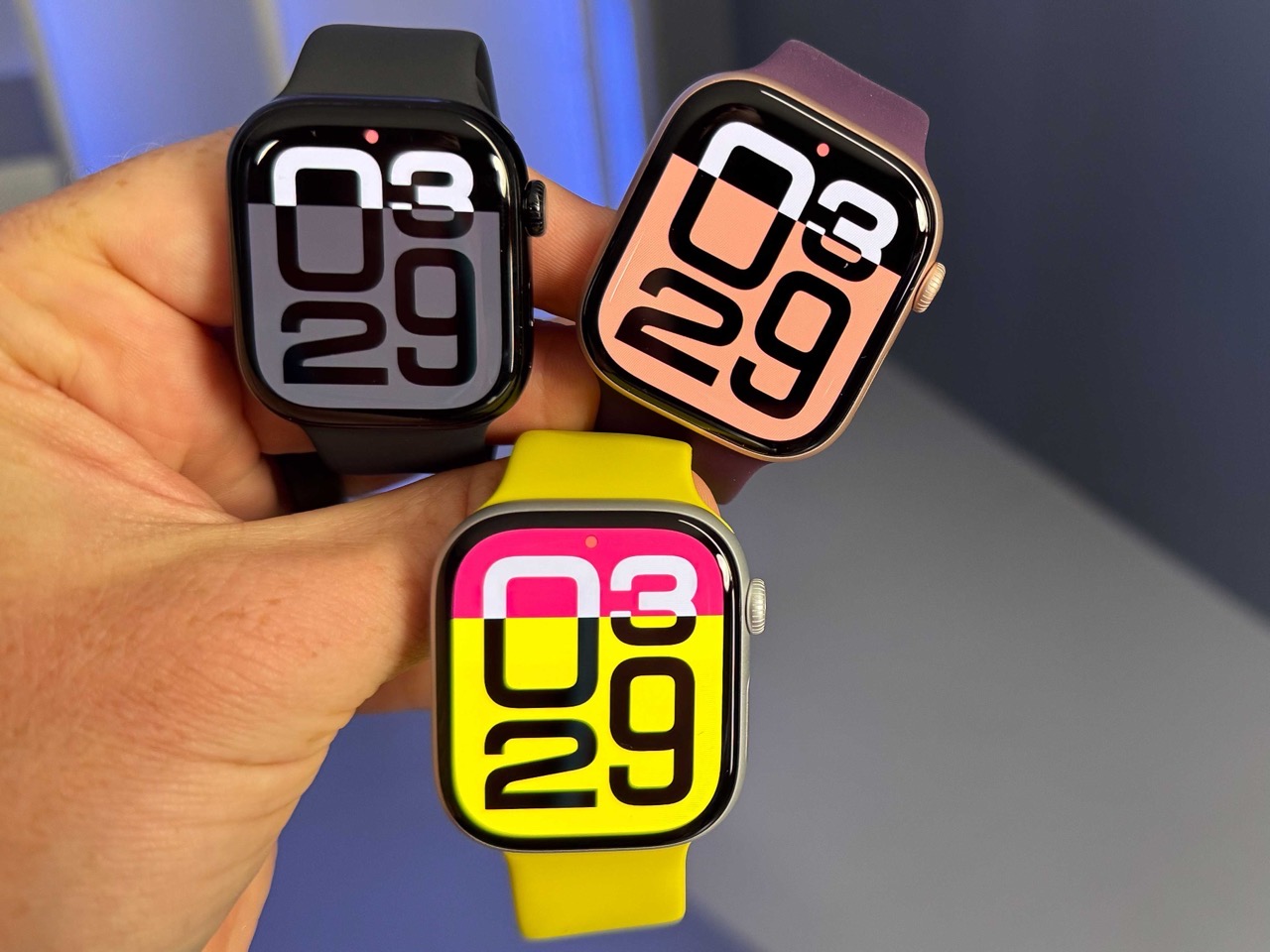
The Apple Watch Series 10 is all about increasing…well…everything. From the display, to the brightness on angle, to the display refresh rate in always-on display mode. Except in one area: It’s now the thinnest Apple Watch ever made, coming in at 9.7mm, 10% thinner than the existing Series 9. Here’s everything that’s changed compared to the Series 9:
– Totally new case design (in terms of visual look), and changes to the model sizes being 42mm/46mm
– Biggest usable display area to date in any Apple Watch: 374x446px for the 42mm 416x496px for the 46mm
– Thinnest design to date (9.7mm versus 10.7mm on Series 9)
– New ‘Ionic Glass’ screen design, which tapers further down the edge of the display
– New “Wide Angle OLED’ display, which is 40% brighter when viewed on an angle
– Increase brightness when viewed
– Always-on display mode will now show seconds even when wrist is down (updates at 1-second rate in standby mode, versus 1-minute rate)
– Added ability to have speaker play media/music (previously it wouldn’t, had to connect headphones)
– New faster charging times, 80% charge in 30 mins (fastest Apple Watch to date)
– New S10 sip (chipset) inside the Series 10
– Adds new voice calling automatic background removal with new neural network
– Adds depth gauge (supports depths to 6m/20ft for snorkeling – still maintains 50m waterproofing)
– Adds temperature sensor (supports water temperature for swimming activities)
– Adds new ’Tides’ app to show tidal data globally
– Adds snorkeling support for Series 10 (via 3rd party Oceanic App/partnership)
– Adds sleep apnea detection, monthly reporting with analysis reports
– Adds new sleep metric: breathing disturbances (which feeds into sleep apnea detection)
– Adds new ‘Flux’ watch face
– Adds new ‘Reflections’ watch face
– Adds new metal backplate to watch
– Three color options for base edition: Rose Gold, Silver Aluminum, Jet Black
– Three new polished titanium versions, weigh 20% less than existing stainless steel variants
– Titanium Series 10 is a carbon-neutral product
– Same pricing at $399 (42mm) & $429 (46mm), or $499/$599 for the cellular editions.
– Pricing for titanium is $699 for the 42mm, and $749 for 46mm (but includes cellular)
– Available to order now, shipping on September 20th, 2024
In addition, Apple has also announced a new Jet Black color option for both the Apple Watch Ultra 2 as well as Apple Watch SE. Both are the same price as previous. Here’s the new Apple Watch Ultra 2 jet black edition:

Of course, this is in addition to existing WatchOS11 features that were announced back in June, including things like the new Vitals app, new training load bits, and more. Also note that the ‘Tides’ App will become part of WatchOS11 for all WatchOS11 compatible Apple Watches.
Note that the sleep apnea features are going back to both the Apple Watch Series 9, as well as Apple Watch Ultra 2 devices. The sleep apnea feature has not yet received medical certification, though Apple expects that this month, and will be available in the US, Europe, and Japan. More on that down lower.
Notably, though, Blood Oxygen hasn’t made a return to the Apple Watch, due to their existing patent dispute with Masimo. Circumventing this would have required Apple to either agree to licensing from Masimo, or design a different sensor that doesn’t infringe on the specifics of Massimo’s patent (as countless other companies have done). At present, Apple has gone with option C: Do nothing. Thus, no changes there for US-based users (this doesn’t impact other countries, and only impacts new models).
For comparison, here’s the existing base Series 9 (left) compared to the Series 10, right:
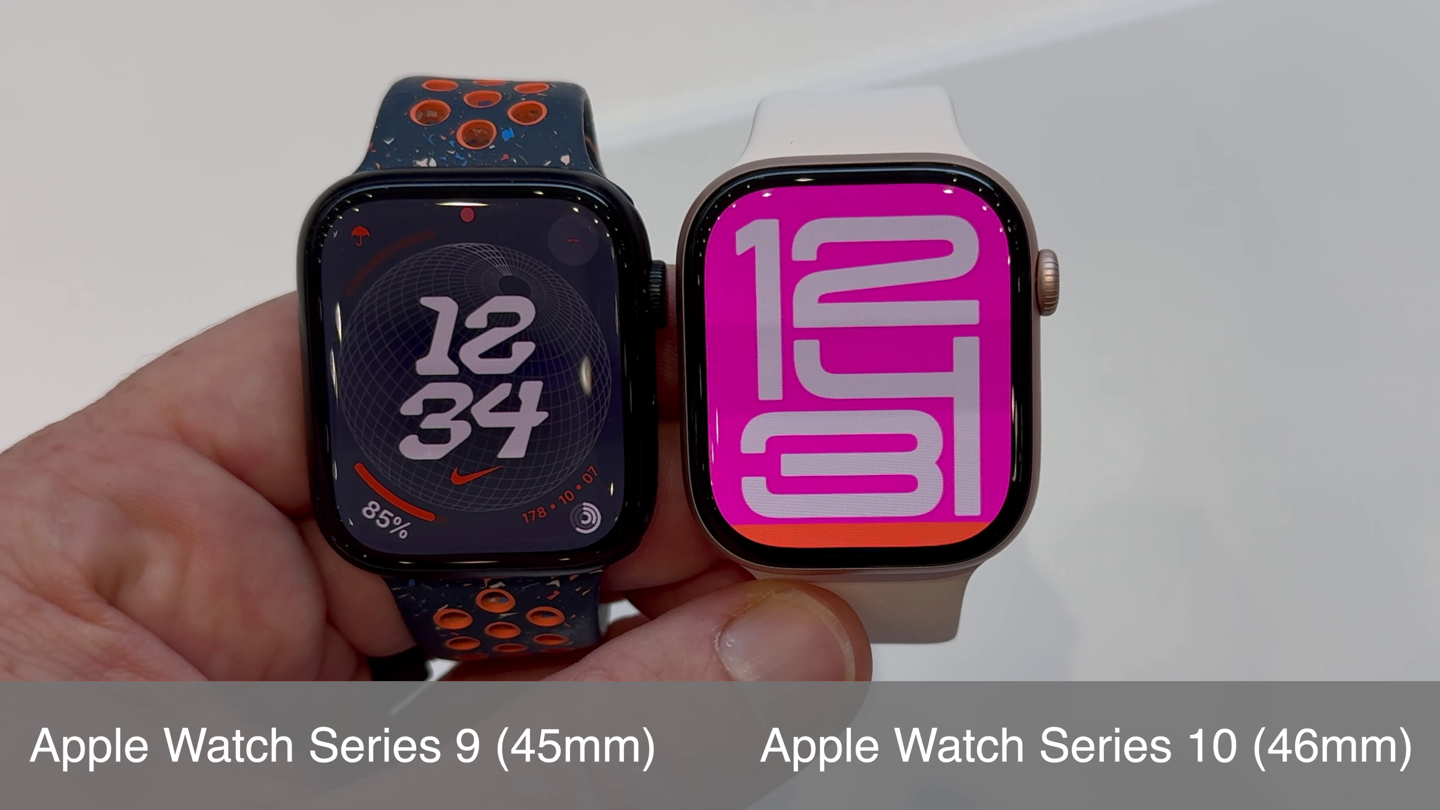
And then here’s the Apple Watch Ultra 2 compared to the Series 10 (46mm):
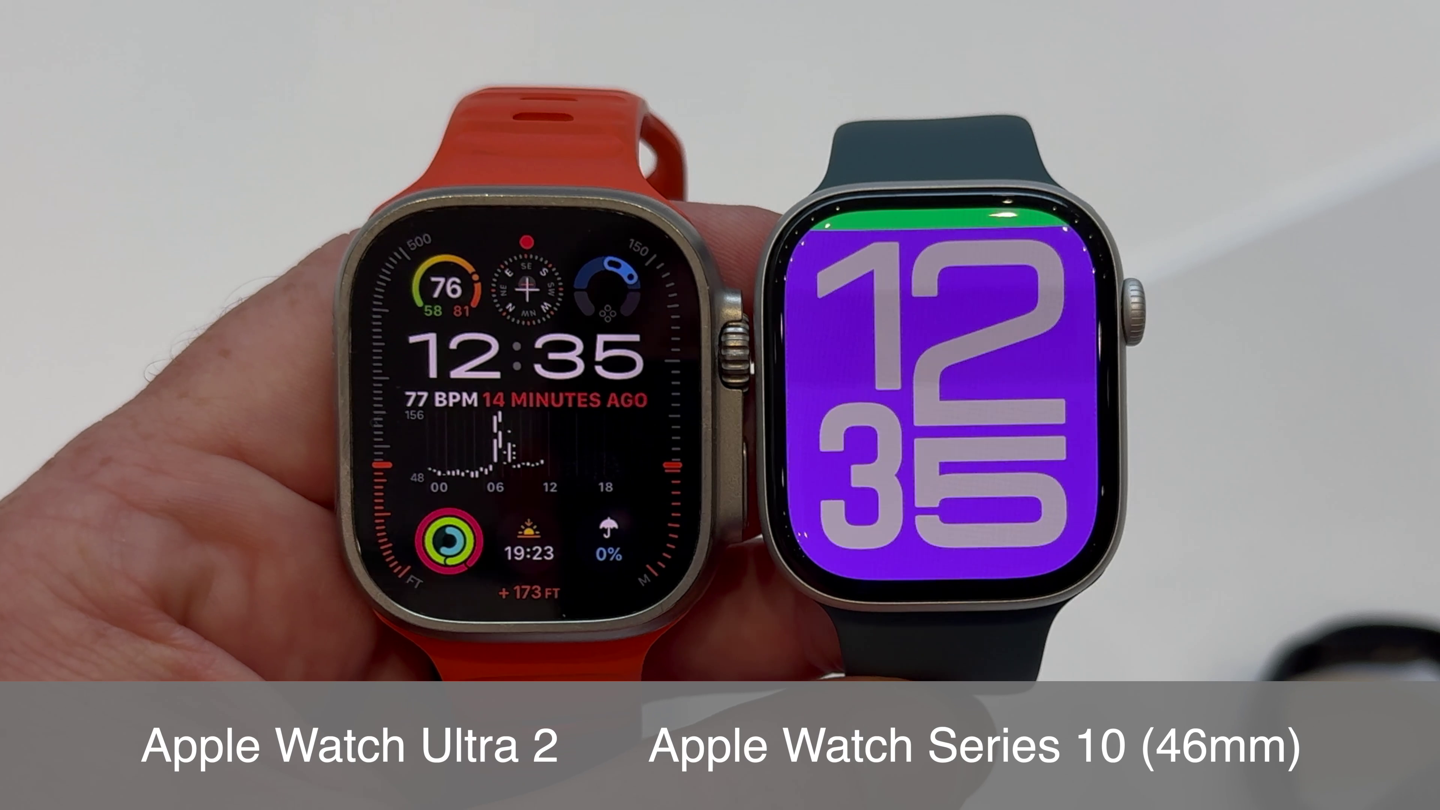
And here’s the 42mm compared to 46mm:
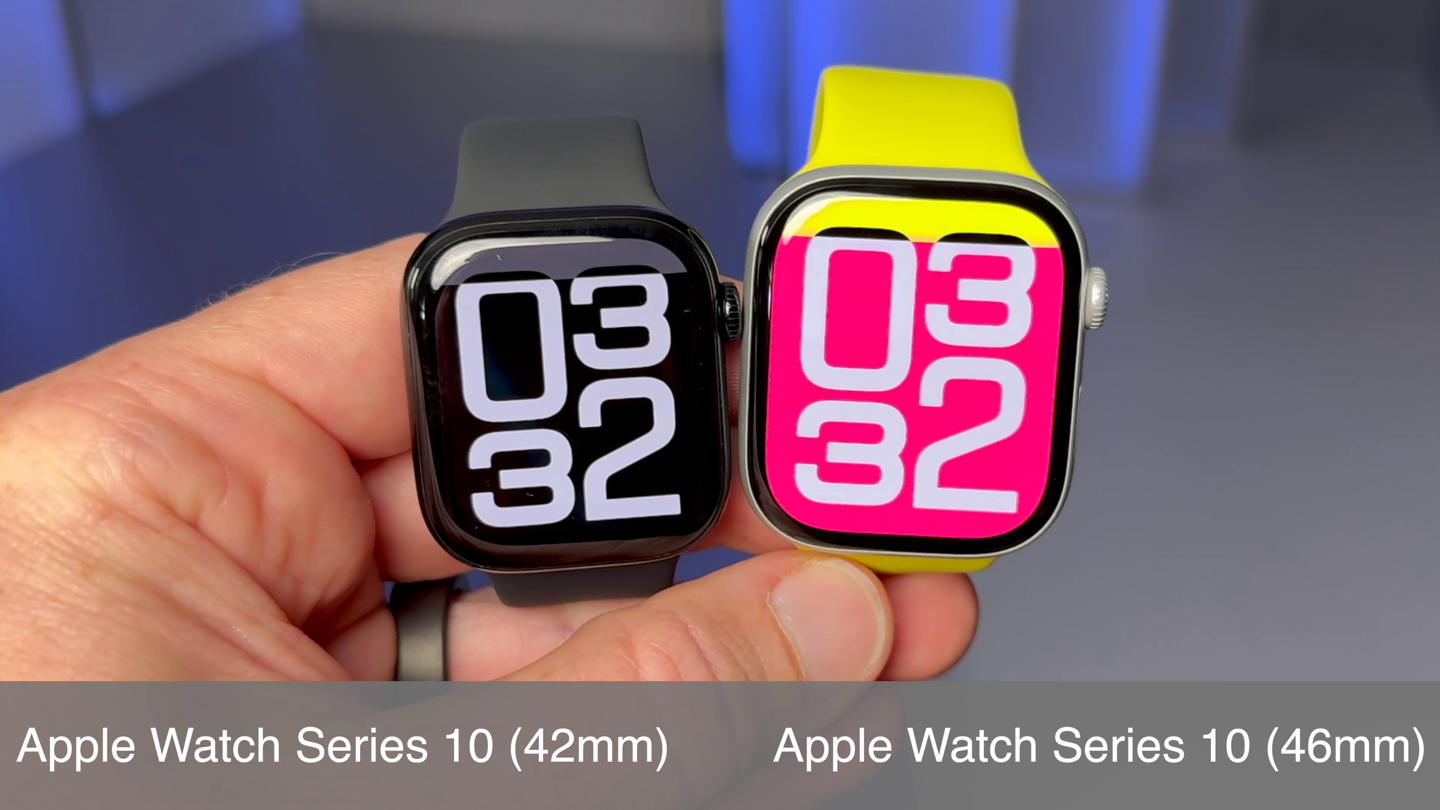
Note that the new faster charging uses the existing Apple Watch charging cables, it uses the more recent Apple Watch charging cables that are faster. Whereas if you have a really old cable, then you want to use the one in the box.
The New Software Features:
Now again, most of the new software features came out as part of WatchOS11, however, there are a few new ones here announced today. For example, first up is the tides app. This shows the tides, anywhere in the world.:
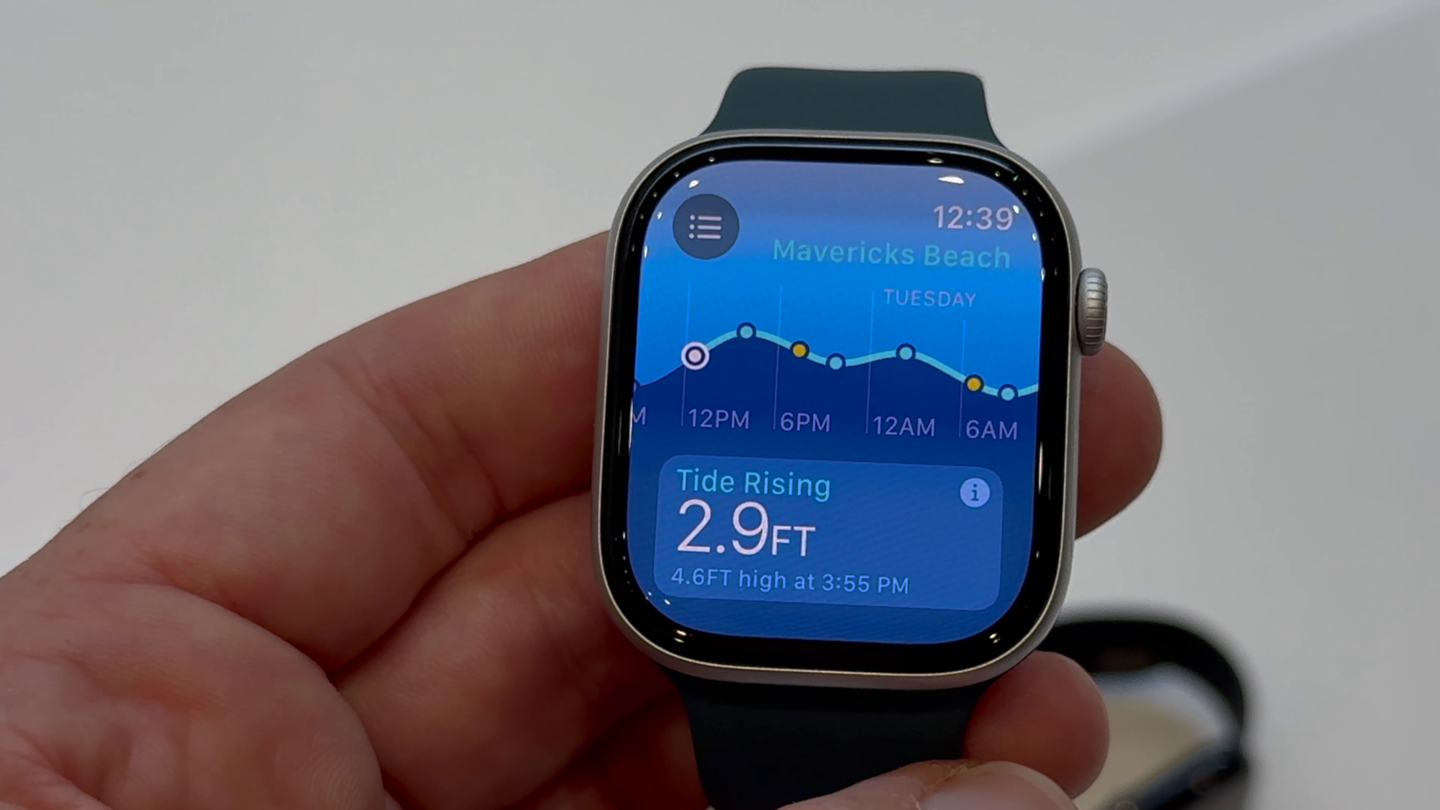
In playing with it a bit, it’s actually pretty cool. It shows tide information by default closest to you, and then you can add any number of other locations from a global database of some 150,000 beach locations. Further, if you tap into it, you can see swell information as well.
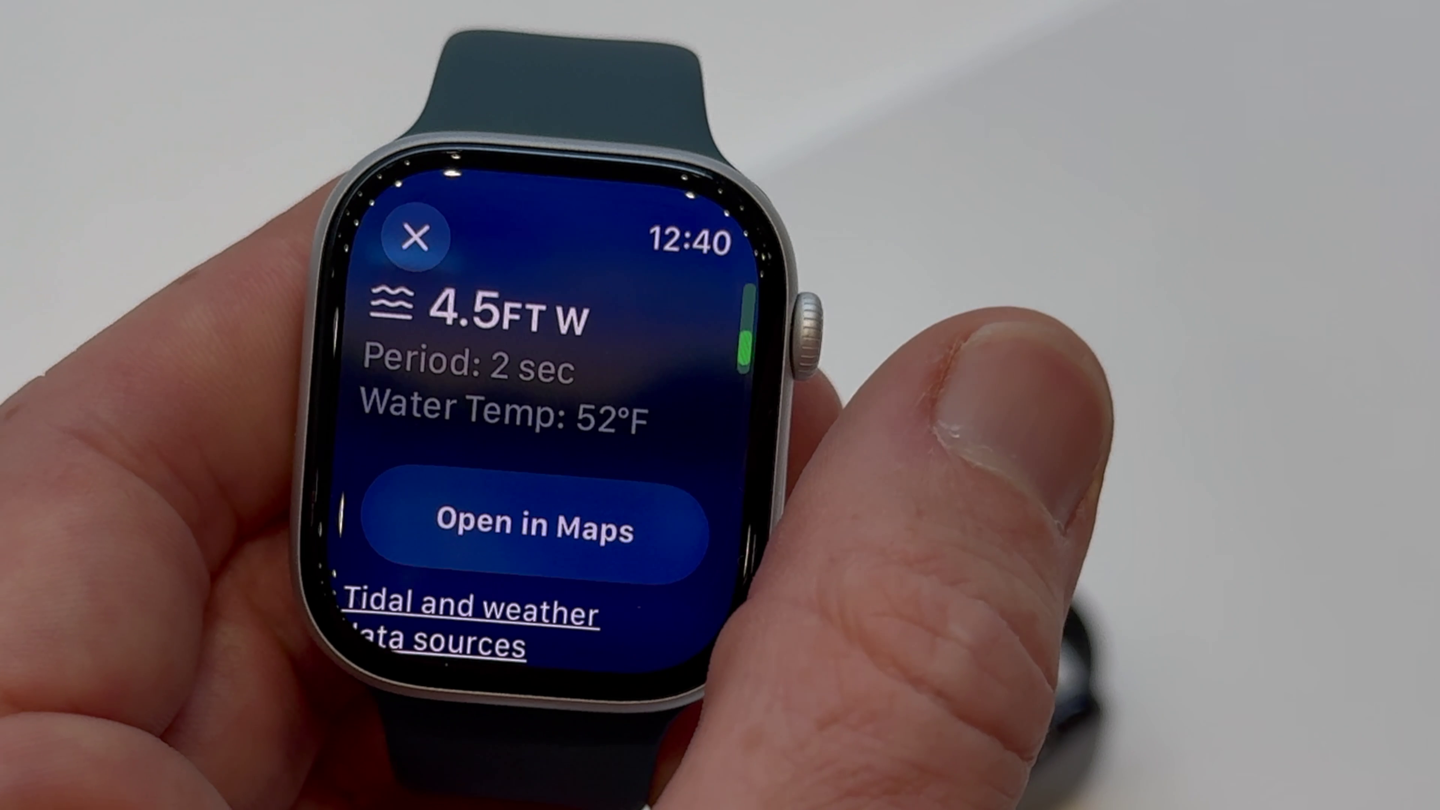
Next, assuming you’re looking to go snorkeling, then you can use the built-in depth gauge. As with the Apple Watch Ultra series, the built-in depth gauge is pretty basic. Of course, at a mere 6m/20ft in depth, you don’t exactly need much in the way of fanciness (whereas in diving, you of course do need things like safety information/etc…).
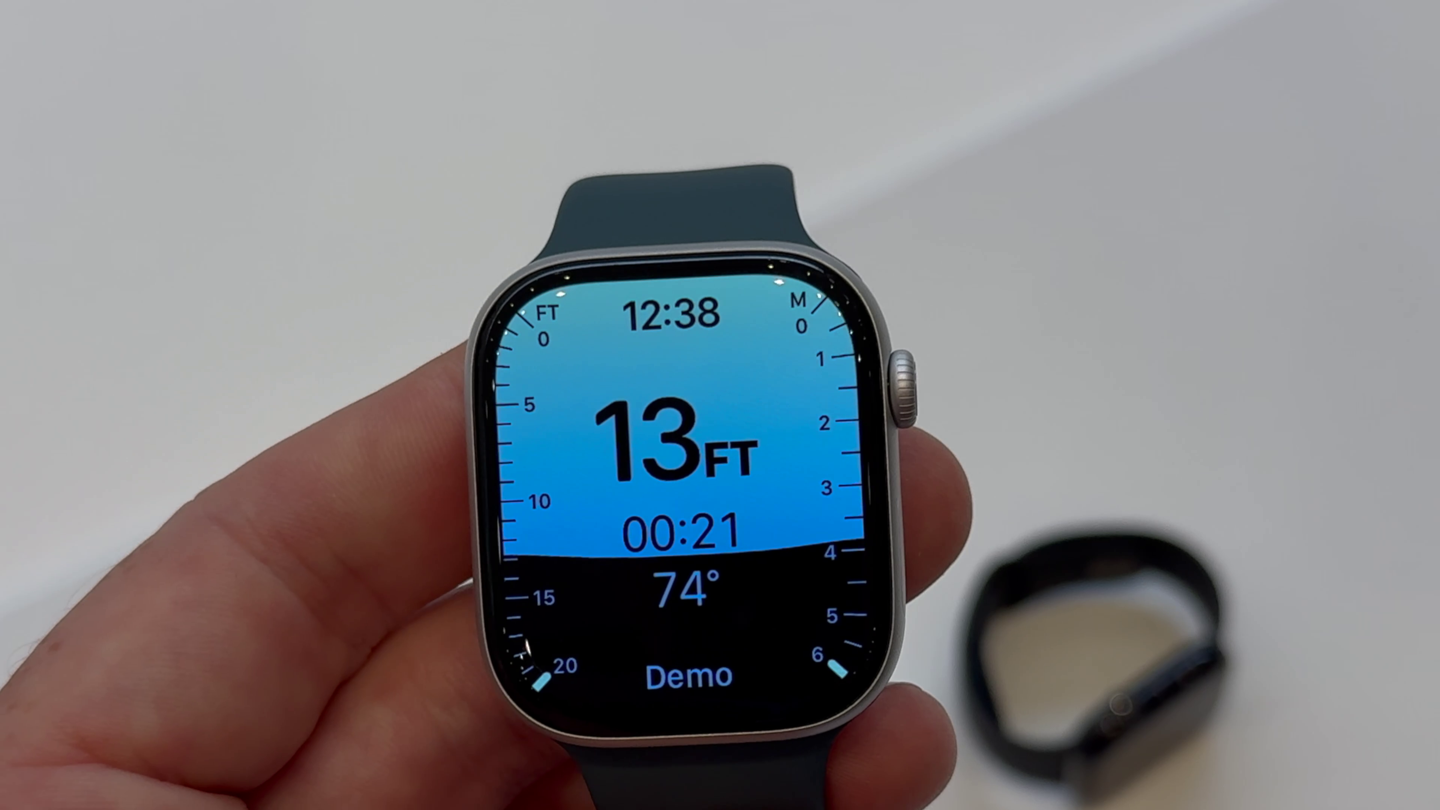
That said, if you want more features, Apple’s existing partnership with Oceanic Plus means you can get the updated Oceanic Plus app, which now covers snorkeling for the Series 10 specifically:
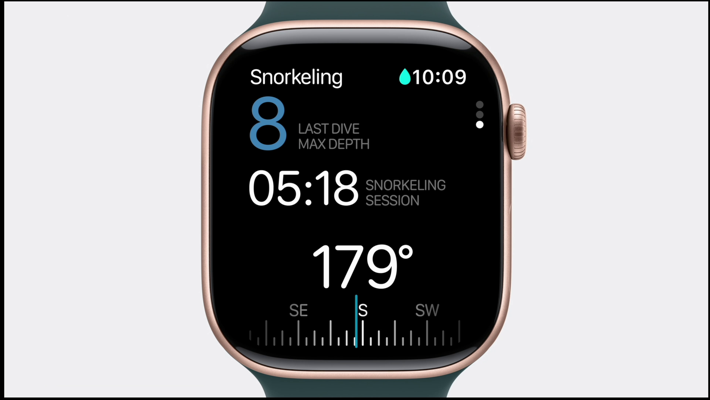
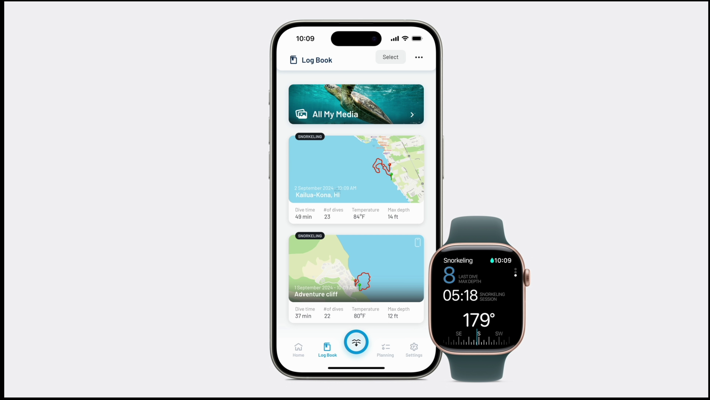
During normal swimming activities on the Apple Watch Series 10 (using the Fitness app), you’ll get water temperature for both openwater and pool swims (and presumably triathlon with those segments in them).
Next, is the newly announced sleep apnea features. These features will be available on the Series 9, Series 10, and Ultra 2. As many companies have pointed out, it’s estimated that some 80% of people globally who have sleep apnea aren’t diagnosed with it. Like other companies, this feature is really about making you aware that you’re suffering from it (since it can substantially impact the rest of your day/life).
The new feature starts off with a new metric, “Breathing Disturbances”, which then gets pulled into a report that occurs every 30 days. That’ll start happening the first night you wear it:
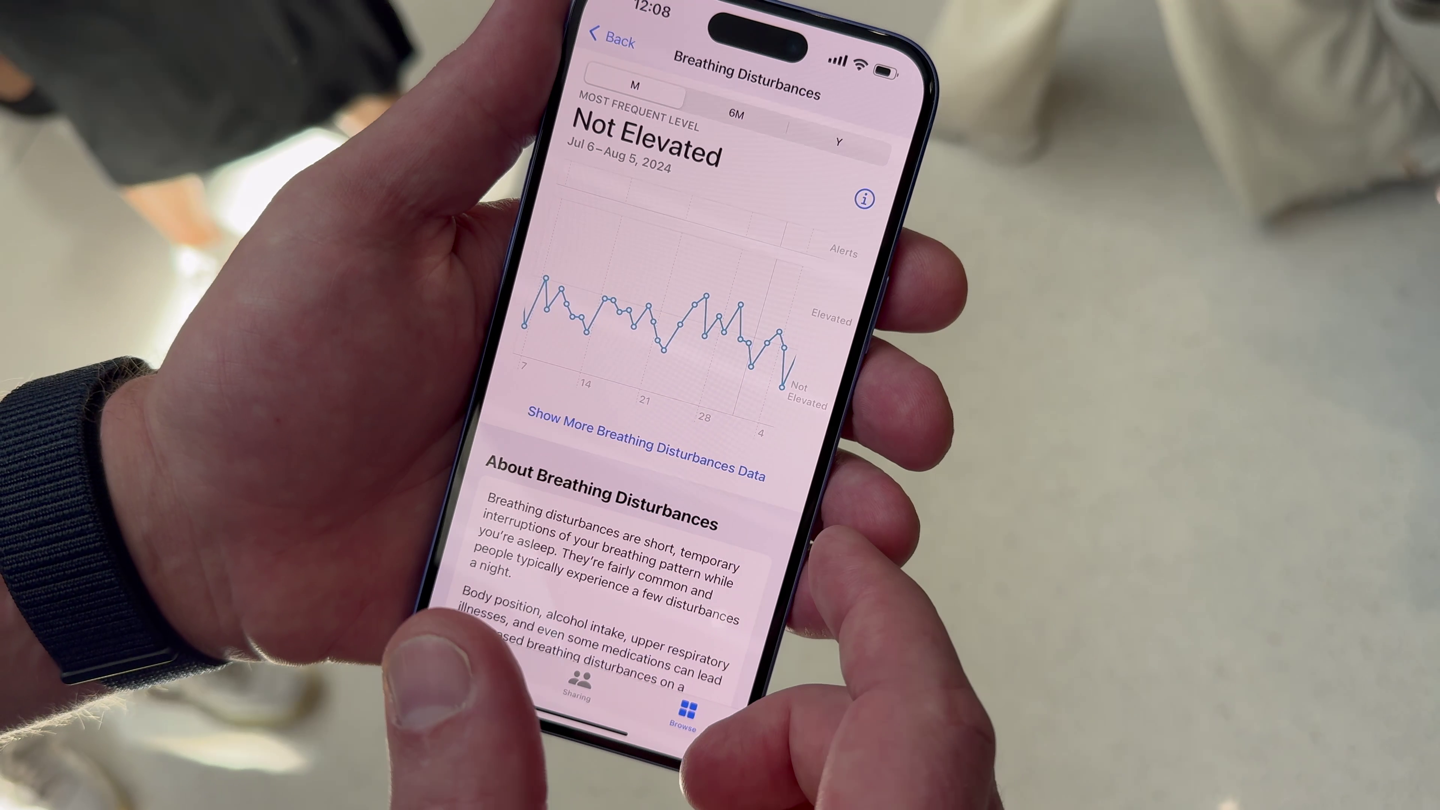
Each month, the iPhone will analyze the data from your Apple Watch and generate a report if/when sleep apnea may have occurred. It’ll include details on what level that occurred, and is based on machine learning and data from a validated clinical study Apple did with 1,400 people including 30 nights of sleep and compared to a medical-grade APAP diagnostic device, cross-referenced by medical experts to validate the data. Apple says the full details of the study will be included in Apple’s FDA certification paperwork, which should be released shortly.
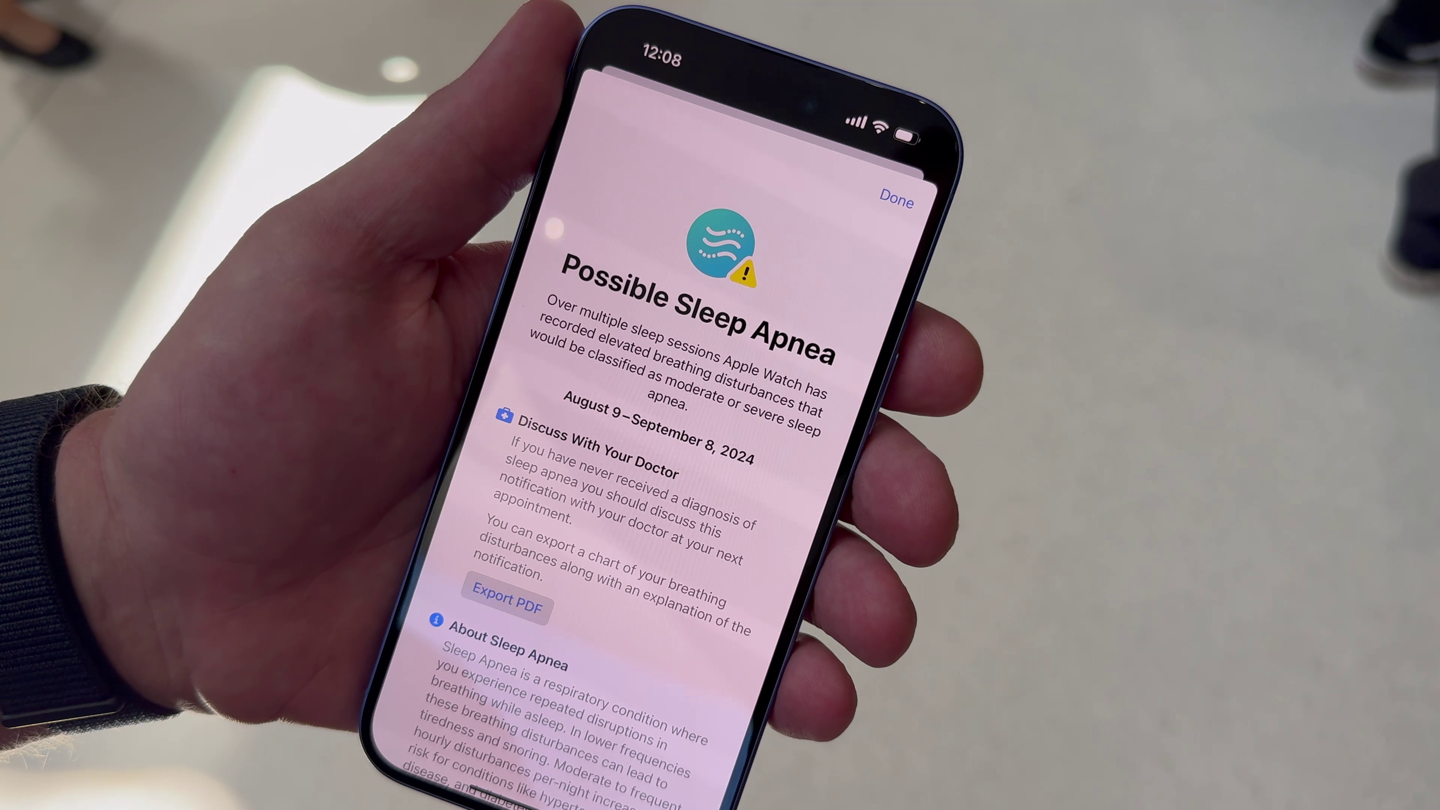
As of today, Apple hasn’t received medical device clearance yet for this in the US, but does have it in Europe and Japan. Apple expects FDA approval this month for the US, which will then trigger an over-the-air toggle of the feature on the Series 9/Series 10/Apple Watch Ultra 2. That’ll include rolling it out to 150+ countries/regions.
Finally, note that the Series 10 now displays seconds when your wrist is down (in always-on display mode), whereas previously it just updated on the minute:
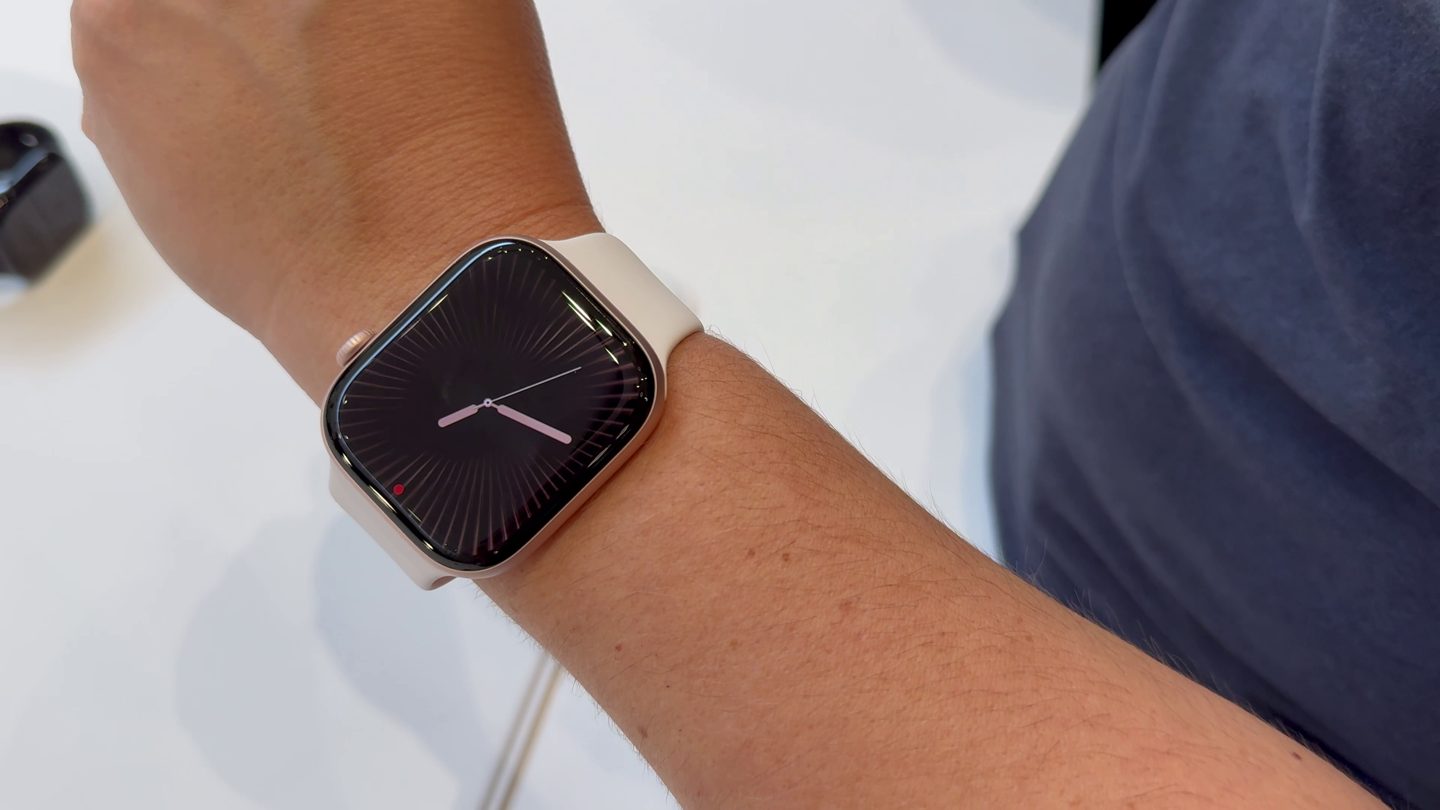
You can see above, the watch in a dimmed state, showing the second hand (this is true of all watch faces that display seconds, as shown in my video, in various fashions).
Wrap-Up:
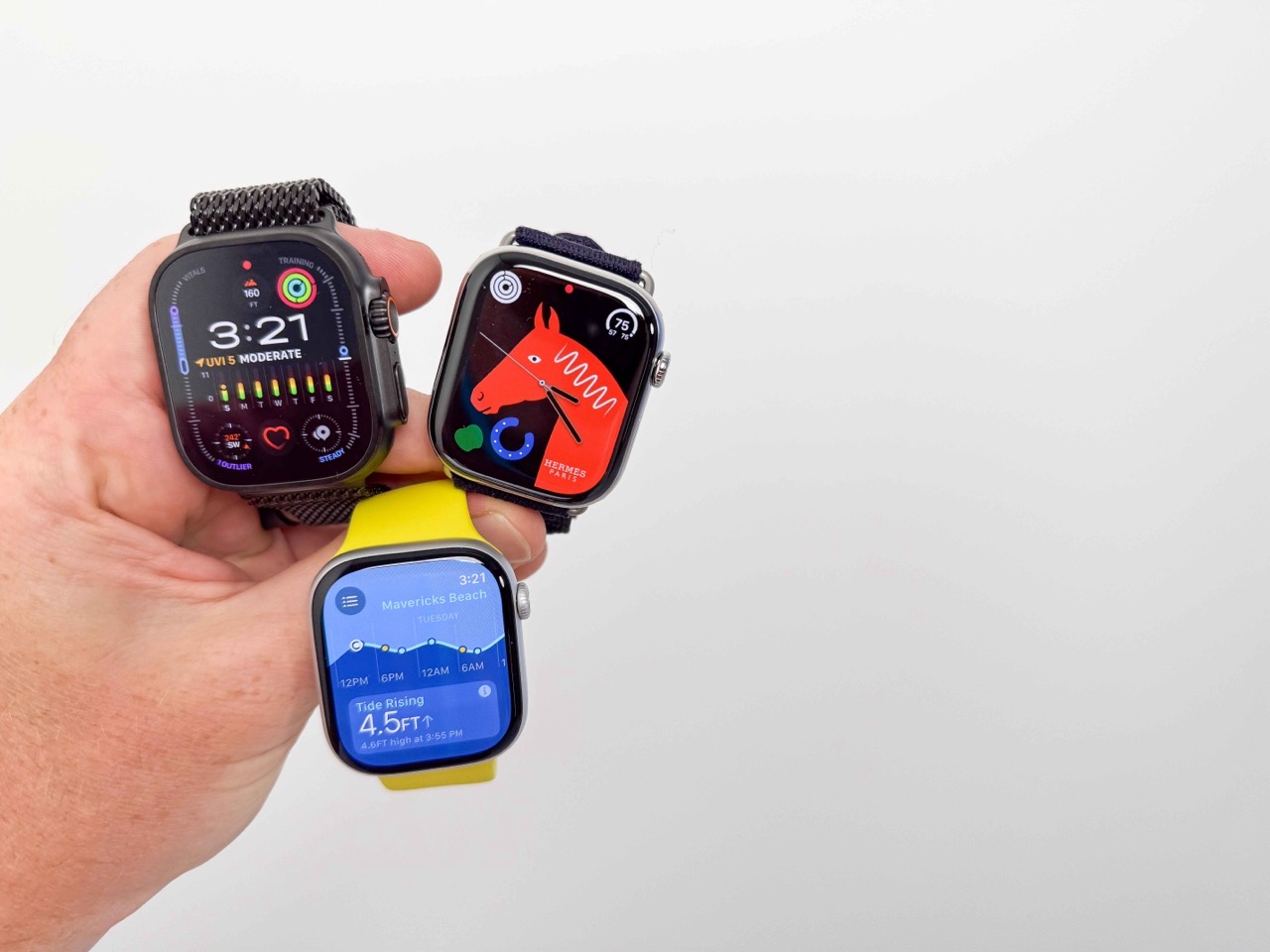
As I’ve said each year, Apple’s methodology is rarely to have massive changes to the Apple Watch as a product. Instead, it’s about continual hardware improvements that are designed to keep it ahead of the competition (and give incentive for people with 2-4 year old models to upgrade). Still, the Series 10 is unquestionably the biggest leap forward for the Apple Watch series (excluding Ultra). Be it the far bigger display, the far faster charging, or the new depth gauge. And then there’s all the smaller features, like better off-angle viewing, etc.. Apple isn’t new with this methodology, other companies are starting to adopt it more and more.
Of course, as always, I’ll have to see how these units handle in daily testing. Does the new display and faster processor result in a better experience? And are there any unmentioned downsides in battery life. After all, it’s a thinner watch. Apple’s usually pretty good with their battery life claims (which is possible given the claims are so low, at just 18 hours in smartwatch mode, that it’s hard not to achieve them). But, I’ll be looking at how they perform in sports tracking as well. And, apparently, I’ll need to properly test out the water temp sensor during swim workouts, and snorkeling features.
With that, thanks for reading!

0 Commentaires